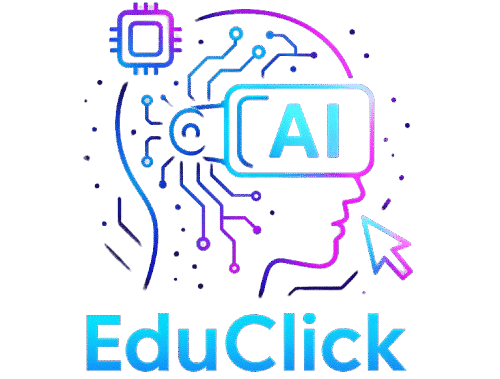The Revolutionary Impact of Blockchain Technology on Credential Verification in Education

Imagine a world where your academic achievements are verified instantly, securely, and unmistakably. Picture this scenario: you’re applying for your dream job, and instead of worrying about gathering a mountain of physical certificates, you simply click a button to share your verified credentials instantly with potential employers. This is the promise of blockchain technology in credential verification, a promise that reshapes the entire landscape of educational technology trends. If you’ve ever felt the frustration of lost documents or questioned the authenticity of credentials presented by others, then you understand the immense value that blockchain brings to the table.

Think back to those moments when you had to dig through old boxes or folders, desperately searching for that one certificate. Perhaps you’ve experienced the anxiety of waiting for your credentials to be manually verified by an institution. All these experiences are not just inconvenient—they are barriers that hinder your progress. Blockchain technology, with its ability to provide immutable and easily accessible records, eliminates these obstacles, allowing you to focus on what truly matters: your growth and development.
Blockchain technology is not only a game-changer for individuals but also for educational institutions that strive for credibility and trust. When authenticity is guaranteed, schools and universities can enhance their reputation and attract more students. As you explore this transformative technology, you will uncover how it ensures that every credential is as reliable and unchangeable as if it were etched in stone, yet as accessible as a click on a smartphone.
The following sections will guide you through a comprehensive understanding of how blockchain technology is reshaping credential verification in education. We will delve into the reasons why this innovation is crucial, the practical applications already in place, and the exciting future it promises.
Understanding Blockchain Technology in Education
The Basics of Blockchain
At its core, blockchain is a decentralized digital ledger that securely records transactions across many computers. By ensuring that each transaction is recorded on multiple nodes, blockchain prevents any single point of failure or fraud. In the context of education, this means that credentials can be recorded in a way that is both secure and transparent.
Educational Technology Trends
Educational technology trends have been evolving rapidly, with blockchain standing at the forefront. By integrating blockchain, educational institutions can keep pace with these trends, ensuring they provide students with innovative tools and techniques that enhance learning outcomes.
Blockchain’s Role in Credential Verification
The role of blockchain in credential verification is to provide a secure, verifiable, and tamper-proof method of recording academic achievements. This not only enhances trust among employers but also streamlines the verification process, reducing the time and resources spent on traditional methods.
The Benefits of Blockchain for Credential Verification
Enhanced Security and Trust
One of the primary benefits of using blockchain for credential verification is enhanced security. Since each credential is encrypted and stored across multiple nodes, the possibility of unauthorized access or modification is significantly reduced. This builds trust between educational institutions and employers.
Efficiency and Accessibility
Time-consuming processes are often a challenge in credential verification. Blockchain technology eliminates the need for manual checks, making the process much more efficient. This means that you can access your credentials anytime, anywhere, without the usual delays.
Reducing Fraud and Increasing Transparency
Fraudulent credentials are a significant issue in education. Blockchain provides a transparent record that can be easily audited, reducing the risk of counterfeit credentials. With blockchain, every achievement you claim is backed by an indelible digital record.
🎥 Vídeo complementar sobre o tópico
Real-World Applications and Case Studies
Leading Institutions Adopting Blockchain
Many leading educational institutions have already begun adopting blockchain technology for credential verification. For example, the Massachusetts Institute of Technology (MIT) has implemented blockchain to issue digital diplomas. These diplomas are not only secure but also easily shareable with employers.
Success Stories from Students and Educators
There are numerous success stories from students who have benefited from blockchain-verified credentials. A notable example is Jane Doe, a recent graduate who secured a prestigious position at a tech firm thanks to her verifiable blockchain diploma, which expedited the hiring process.
Practical Applications in the Job Market
The job market greatly benefits from blockchain credential verification as it ensures that employers receive credible information. This eliminates the tedious process of contacting educational institutions for verification, thus speeding up hiring decisions.
Challenges and Solutions in Implementing Blockchain
Scalability and Integration
One of the challenges of implementing blockchain in education is scalability. As more institutions adopt this technology, the need for seamless integration with existing systems becomes critical. Solutions include developing standardized protocols that can be universally applied across platforms.
Cost Implications
Implementing blockchain technology requires an initial investment which can be a barrier for some institutions. However, the long-term benefits such as reduced fraud and increased efficiency often outweigh these costs. Collaborations and partnerships can be effective strategies to mitigate financial challenges.
Privacy Concerns
While blockchain ensures data security, privacy concerns remain, particularly around who can access the data. Smart contracts and permissioned blockchain networks are being explored as solutions to ensure data privacy while maintaining transparency.
The Future of Blockchain in Education
Potential for Global Adoption
The potential for global adoption of blockchain in education is immense. As international collaboration grows, a universal system of credential verification could facilitate smoother cross-border education and employment opportunities.
Innovations on the Horizon
Innovations in blockchain technology continue to emerge. These include the use of artificial intelligence to analyze credential data and predict educational trends, further enhancing the value of blockchain in educational technology.
Long-term Impact on Educational Technology
The long-term impact of blockchain on educational technology is profound. By providing secure, reliable, and easily accessible credential verification, blockchain is set to become a foundational technology in the education sector.

Frequently Asked Questions
What is blockchain credential verification?
Blockchain credential verification is the process of using blockchain technology to securely and transparently record and verify educational credentials. It ensures that credentials are immutable and easily accessible by authorized parties, enhancing trust and efficiency in the verification process.
How does blockchain enhance security in credential verification?
Blockchain enhances security by encrypting credentials and distributing them across multiple nodes in a decentralized network. This makes it nearly impossible for unauthorized alterations, ensuring that each credential is genuine and tamper-proof.
Can blockchain reduce credential fraud in education?
Yes, blockchain can significantly reduce credential fraud by providing a transparent and verifiable record of each credential. This transparency makes it easy to detect and prevent fraudulent activities, thereby protecting the integrity of educational qualifications.
Are there any cost concerns with implementing blockchain in education?
While the initial implementation of blockchain technology can be costly, the long-term benefits such as reduced fraud, increased efficiency, and enhanced trust often justify the investment. Additionally, partnerships and collaborations can help mitigate these costs.
What challenges exist in integrating blockchain with existing educational systems?
Challenges in integrating blockchain with existing educational systems include scalability, compatibility, and data privacy concerns. Solutions involve developing standardized integration protocols and exploring permissioned blockchain networks to address these issues effectively.
How can students benefit from blockchain credential verification?
Students benefit from blockchain credential verification through improved job prospects as employers can quickly and reliably verify their qualifications. It also provides students with secure, lifelong access to their credentials, simplifying further education or career advancements.
What future trends are likely to emerge from blockchain in education?
Future trends may include global adoption of blockchain for seamless international credential recognition, the integration of AI to analyze educational data, and increased collaboration amongst educational institutions to develop unified blockchain protocols.
Is blockchain technology limited to higher education?
No, blockchain technology is not limited to higher education. It can be applied to a wide range of educational levels and institutions, including vocational training and professional certifications, providing a comprehensive solution for all types of credential verification.
Conclusion
In a world where technology continuously transforms every aspect of our lives, blockchain stands out as a pivotal innovation in educational technology trends. Its impact on credential verification is both revolutionary and necessary, offering a future where your achievements are secure and instantly verifiable. As you navigate the evolving landscape of education and employment, embracing blockchain technology can provide you with unmatched credibility and convenience.
The journey towards adopting blockchain in education is not without its challenges, but the benefits far outweigh the initial hurdles. By enhancing security, reducing fraud, and streamlining processes, blockchain empowers both individuals and institutions. As more institutions adopt this technology, the collective trust in educational credentials will inevitably rise, creating a more transparent and efficient academic ecosystem.
We encourage you to stay informed and engage with the ongoing developments in blockchain technology. Whether you’re a student, educator, or employer, understanding and leveraging blockchain can provide you with significant advantages in today’s digital world. As you explore the possibilities, remember that you are part of a transformative movement shaping the future of education.
Key Takeaways
- Blockchain technology offers a secure, reliable, and efficient method for credential verification in education.
- Educational technology trends are increasingly incorporating blockchain to enhance trust and efficiency.
- Real-world applications demonstrate the practical benefits of blockchain in reducing fraud and improving accessibility.
- Challenges such as scalability and cost are being addressed through innovative solutions and collaborations.
- The future of blockchain in education promises global adoption, increased transparency, and integration of new technologies.




